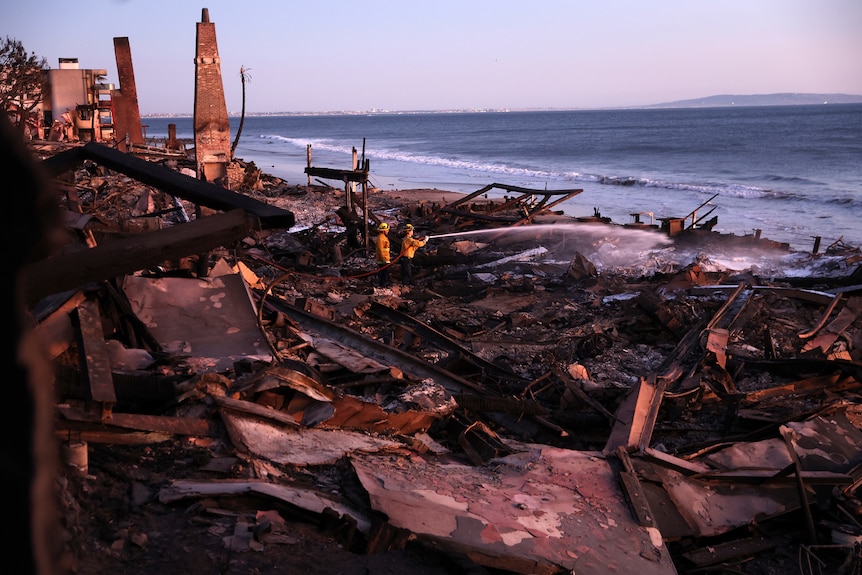Russia's Aerial Assault On Ukraine: US Peace Plan Faces Steep Odds

Table of Contents
The Brutal Reality of Russia's Aerial Campaign
Russia's air strikes against Ukraine represent a brutal and sustained campaign aimed at crippling the country's infrastructure and military capabilities. This aerial bombardment has inflicted immense suffering on the Ukrainian people and continues to escalate the humanitarian crisis.
Targeting Civilian Infrastructure
Russia's air campaign has demonstrably targeted civilian infrastructure, violating international humanitarian law and sparking widespread war crimes allegations. This deliberate targeting aims to break the will of the Ukrainian people and undermine their resistance.
- Examples: The repeated attacks on power grids across Ukraine during winter, leaving millions without heat and electricity; the bombing of hospitals and schools; the destruction of water treatment facilities.
- Casualties: The exact number of civilian casualties is difficult to ascertain due to the ongoing conflict, but reports from various human rights organizations paint a grim picture of widespread suffering and loss of life.
- Weaponry: Russia employs a range of weaponry in its air strikes, including cruise missiles, ballistic missiles, and various types of drones, maximizing the destructive impact on Ukrainian civilian infrastructure.
Air Superiority and Limitations
While Russia initially aimed for air superiority, Ukrainian air defenses, bolstered by Western-supplied weaponry, have proven more resilient than initially anticipated.
- Ukrainian Air Defenses: Systems like the NASAMS and Patriot missile systems, supplied by the US and its allies, have successfully intercepted numerous Russian missiles and aircraft, limiting the effectiveness of Russia's air force capabilities.
- Western-Supplied Weaponry: The ongoing provision of advanced air defense systems from Western nations remains crucial in mitigating the impact of Russia's aerial assault.
- Limitations of the Russian Air Force: The Russian air force has faced challenges in achieving full air superiority, hampered by effective Ukrainian defenses and logistical constraints.
The Human Cost of Aerial Bombardment
The human cost of Russia's aerial bombardment is staggering and far-reaching, extending beyond immediate casualties. The psychological impact, displacement of civilians, and strain on the healthcare system are profound.
- Displacement: Millions of Ukrainians have been displaced from their homes due to the ongoing conflict, exacerbating the humanitarian crisis.
- Psychological Trauma: The constant threat of air raids and the widespread destruction have led to widespread psychological trauma among the Ukrainian population.
- Healthcare System Impact: The destruction of hospitals and medical facilities has severely hampered the ability of the Ukrainian healthcare system to cope with the crisis, impacting both victims of the aerial assault and broader healthcare needs. The long-term consequences of this are likely to be devastating.
The US Peace Plan: A Difficult Path to Peace
The US has proposed a peace plan aimed at ending the conflict in Ukraine, but its implementation faces significant obstacles.
Key Provisions of the Plan
The US peace initiative outlines several key proposals designed to bring about a lasting peace. The specifics vary depending on the source, but generally, include provisions concerning:
- Ceasefire: An immediate cessation of hostilities is central to the plan.
- Territorial Concessions: The plan likely involves some form of compromise on territorial issues, though details remain vague and highly contentious.
- Humanitarian Aid: The plan addresses the dire humanitarian situation in Ukraine through the provision of extensive international aid.
- Security Guarantees: Long-term security guarantees for Ukraine are a key element of the US peace initiative.
Obstacles to Implementation
Several critical obstacles impede the implementation of the US peace plan:
- Russia's Refusal to Negotiate: Russia's unwillingness to engage in meaningful negotiations poses a significant hurdle.
- Lack of Trust: Deep-seated mistrust between the warring parties undermines confidence in any potential agreement.
- Disagreements on Territorial Integrity: Disagreements over territorial integrity and sovereignty remain a major point of contention.
- International Actors: The role and influence of other international actors, particularly China, add another layer of complexity to the negotiations.
International Support and Opposition
International support for the US peace plan is varied, reflecting the geopolitical complexities of the conflict.
- Key World Leaders' Statements: While many nations support the general principle of peace, their concrete support for specific elements of the plan varies.
- UN Resolutions: The UN Security Council remains deeply divided on the Ukraine conflict, hindering the development of unified resolutions supporting the US peace plan.
- Potential Sanctions: The threat of further sanctions against Russia could act as leverage, but its effectiveness remains uncertain.
- Internal Political Divisions: Internal political divisions within countries add to the complexities of forming a united international response.
The Prognosis: A Bleak Outlook for a Quick Resolution
Given the current circumstances, a swift resolution to the conflict in Ukraine seems unlikely. Several factors suggest a protracted conflict is a strong possibility:
- Continued Military Escalation: The ongoing military actions, including Russia's aerial assault on Ukraine, indicate a lack of willingness to de-escalate.
- Economic Impact: The war's economic consequences, globally and regionally, will likely continue to shape the conflict for the foreseeable future.
- Regional Instability: The war has created significant regional instability, potentially leading to further conflicts and escalating tensions.
- Potential for Wider Conflict: The risk of the conflict expanding beyond Ukraine's borders remains a significant concern.
Conclusion
Russia's aerial assault on Ukraine continues to complicate efforts towards peace. The US peace plan, while a laudable attempt at resolving the conflict, faces extremely steep odds due to Russia's aggressive actions and lack of willingness to negotiate in good faith. The ongoing brutality of the aerial bombardment, highlighted by the targeting of Ukrainian civilian infrastructure, underscores the urgent need for a peaceful resolution, yet the path to achieving that remains deeply uncertain. Continued international pressure and a concerted diplomatic effort are crucial to finding a way out of this devastating war. Understanding the complexities of Russia's aerial assault on Ukraine is paramount to developing effective strategies for achieving lasting peace. Further examination of Russia's aerial assault on Ukraine is vital to informing policy and fostering effective international action.

Featured Posts
-
 Robotic Limitations In Nike Sneaker Manufacturing Challenges And Opportunities
Apr 22, 2025
Robotic Limitations In Nike Sneaker Manufacturing Challenges And Opportunities
Apr 22, 2025 -
 The Passing Of Pope Francis A Global Mourning
Apr 22, 2025
The Passing Of Pope Francis A Global Mourning
Apr 22, 2025 -
 Selling Sunset Star Exposes La Landlord Price Gouging After Fires
Apr 22, 2025
Selling Sunset Star Exposes La Landlord Price Gouging After Fires
Apr 22, 2025 -
 Open Ais Chat Gpt Under Ftc Scrutiny Implications For Ai Development
Apr 22, 2025
Open Ais Chat Gpt Under Ftc Scrutiny Implications For Ai Development
Apr 22, 2025 -
 Saudi Aramco Invests In Chinas Byd For Electric Vehicle Innovation
Apr 22, 2025
Saudi Aramco Invests In Chinas Byd For Electric Vehicle Innovation
Apr 22, 2025
